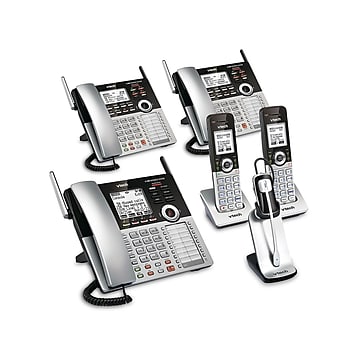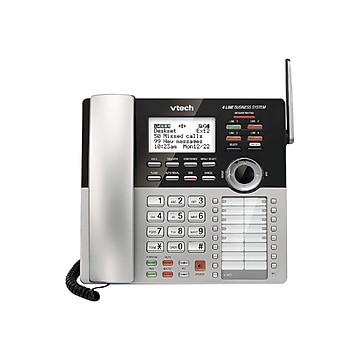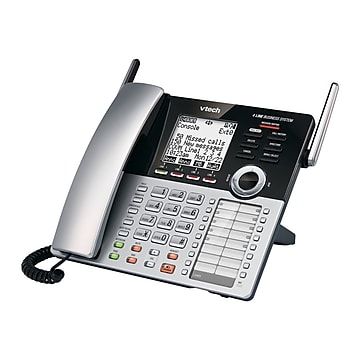4 Line Phone System
Related Searches
Trending now
When working in an office environment, it’s important to have all of the equipment you’ll need in order to be efficient. This equipment will look different for specific jobs, but there are a few basic necessities most office workers will require. Some of these go-to desk accessories include a computer, a monitor, a desk calendar and an office phone.
Office phones are widely used across many industries, businesses and types of workplaces. To maximize communication, it can be helpful to use a 4-line phone system. Learn more about 4-line phone systems below.
Why Should I Use a 4-Line Phone System?
4-line phone systems make it possible for users to take up to four calls at once. This makes it easier for employees to interact both internally and externally throughout the day. There’s nothing worse than being on the phone with a client only for there to be another incoming call and no way to answer it. This can easily result in lost business, or, at the very least, it could be difficult to get back to callers in a reasonable timeframe.
Furthermore, these lines can be internal or external. Internal lines allow employees to communicate with each other, while external lines allow communication with customers, vendors or anyone else outside the office. Additionally, if you are frequently on the go, you can program your phone to forward all of your incoming calls to your mobile device. That way, you won’t have to be glued to the office phone when your role keeps you on the go.
What Features Do 4-Line Phone Systems Have?
Office phones that use four-line phone systems have plenty of handy features that are helpful to employees. Read about the most common tools available below.
Digital Answering
Digital answering services work by automatically answering a call and recording a message from whoever’s on the phone when you’re not available. This feature provides you with a lot of flexibility, and allows you to save, skip or delete messages.
Caller ID
Caller ID allows you to see a snapshot of information that lets you know who’s calling if it’s available. Generally, caller ID lists out the caller’s name and number, but it can also list other information, like the location where they’re calling from.
Corded vs Cordless
Office phones are available in both corded and cordless models, and both have their own benefits. For example, corded office phones have a clearer and more reliable connection. Cordless office phones, on the other hand, allow you to get up and walk around while you’re on a call.































































